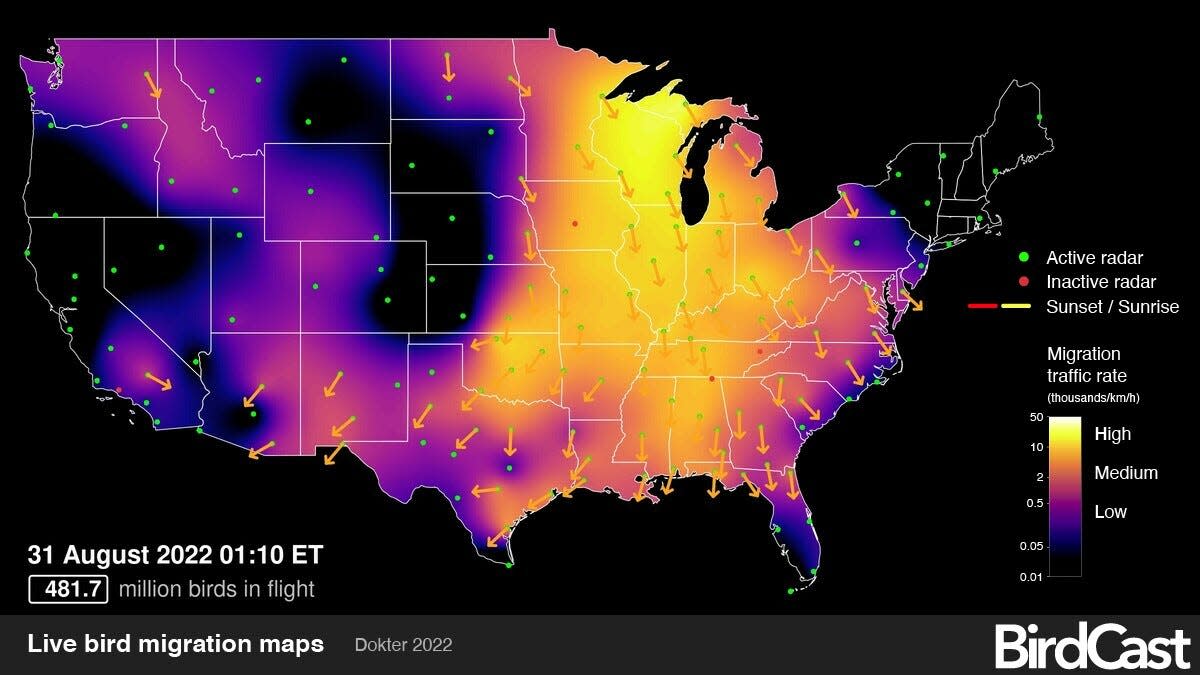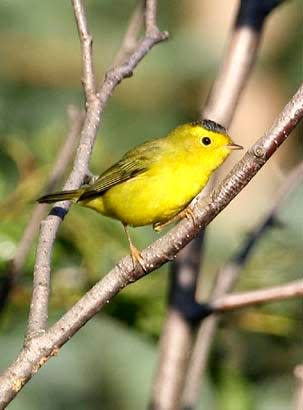Weather radar lights up as Wisconsin sees spike in bird migration patterns as August draws to a close

The first signs of fall are here: blushes of color on tree branches, ripening apples, the official start of pumpkin spice latte season. Another is the sight of birds migrating south for winter, and on Tuesday night, they launched en masse.
BirdCast found a spike in bird migration activity Tuesday night across the state of Wisconsin. From 7:40 p.m. Tuesday to 6:20 a.m. Wednesday, an estimated 48.4 million birds crossed Wisconsin, according to BirdCast. For this season, that was the highest number by far, double the second-highest night of Aug. 25.
The website's radar detected that, for the most part, they're passing over Wisconsin and Illinois and fanning out over the Deep South.
Local media said that they picked up birds through their weather radar, too. WSAW, Channel 7, in Wausau, posted a radar image that was "full of green," which usually indicates rain. In this case, the radar detected birds.
Ryan Brady, a conservation biologist with the state Department of Natural Resources, said because many birds migrate at night, "flying over our heads while we're sleeping," being able to visualize how many are moving at once is "fascinating."
'A perfect migration night'
According to Brady, drier weather, clear skies and light northwest winds "teed up for a perfect migration night" for bird species like warblers, songbirds and orioles.
"The timing is pretty right for large-scale migration movements," he said. "September is really the peak month for a lot of these long-distance migrants."
Many of these birds, shore birds and songbirds alike, come from the Arctic and Canada, Brady said. Their final destinations are the Gulf Coast and South America.
As for why birds move at night, Jennifer Phillips-Vanderberg, director of the Western Great Lakes Bird and Bat Observatory in Port Washington, said the reasons are "hard to nail down." But fewer predators, easier navigation, and more favorable weather could all possibly be factors.
She also said the organization's volunteer observers are finding migratory songbirds and warblers resting from their long flights, as well as hawks migrating during the day.
And the birds aren't done. According to BirdCast's local alerts, cities across eastern and central Wisconsin — such as Appleton, Green Bay, Stevens Point and Milwaukee — can expect to see thousands of birds pass overhead tonight. Typically, Brady said, the last of the birds pass through in November.

Despite the massive migration numbers, birds still need humans' help
There's still some mystery about what birds are out there and how many, but Phillips-Vanderberg said a combination of radar studies and individual bird tracking can give a "holistic picture of how the birds are doing."
Even though massive numbers of birds are on the move, Brady emphasized that the overall numbers of migratory birds have declined due to habitat loss and increasing human population.
"If we had the same BirdCast 20 years ago, and certainly 50 or 100 years ago, that number would be way higher," Brady said.
Migration is a "very perilous, hazardous time" for birds, Brady said, but there are things people can do to help them out.
Turning off lights at night, planting native plants in yards, covering windows to make them less reflective and keeping cats indoors, he said, are things people can do to help ensure these massive migrations can continue.
"Migrating birds are more important now than ever," Brady said. "They're under stress from all angles."
Contact Rebecca Loroff at 920-907-7801 and rloroff@gannett.com. Follow her on Twitter @RebeccaLoroff.
This article originally appeared on Appleton Post-Crescent: Wisconsin weather radar catches bird migration spike as summer ends

